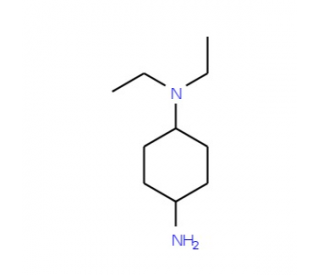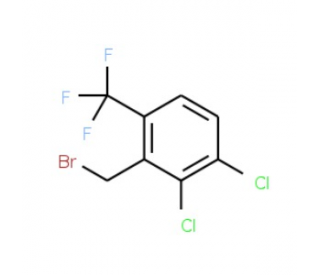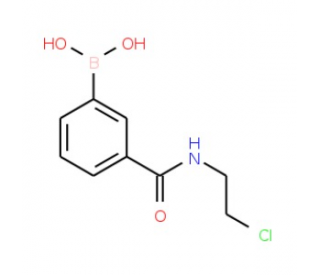詳細(xì)說(shuō)明
Purity
>95%, by SDS-PAGE visualized with Silver Staining and quantitative densitometry by Coomassie? Blue Staining.
Endotoxin Level
<1.0 EU per 1 μg of the protein by the LAL method.
Activity
Measured by the ability of the immobilized protein to support the adhesion of human red blood cells. Kelm, S. et al. (1994) Current Biology 4:965. The ED 50 for this effect is 0.03-0.15 μg/mL.
Source
Mouse myeloma cell line, NS0-derived
Human Siglec-2
(Asp20-Arg687)
Accession # CAA42006DIEGRMD Human IgG1
(Pro100-Lys330)N-terminus C-terminus Accession #
N-terminal Sequence
AnalysisAsp20
Structure / Form
Disulfide-linked homodimer
Predicted Molecular Mass
101.9 kDa (monomer)
SDS-PAGE
122-127 kDa, reducing conditions
1968-SL |
| |
Formulation Lyophilized from a 0.2 μm filtered solution in PBS. | ||
Reconstitution Reconstitute at 100 μg/mL in sterile PBS. | ||
Shipping The product is shipped at ambient temperature. Upon receipt, store it immediately at the temperature recommended below. | ||
Stability & Storage: Use a manual defrost freezer and avoid repeated freeze-thaw cycles.
|
Background: Siglec-2/CD22
Siglecs (sialic acid binding Ig-like lectins) are I-type (Ig-type) lectins belonging to the Ig superfamily. They are characterized by an N-terminal Ig-like V-type domain which mediates sialic acid binding, followed by varying numbers of Ig-like C2-type domains (1, 2). Eleven human Siglecs have been cloned and characterized. They are sialoadhesin/CD169/Siglec-1, CD22/Siglec-2, CD33/Siglec-3, Myelin-Associated Glycoprotein (MAG/Siglec-4a) and the identified Siglecs 5 to 11 (1 ? 3). To date, no Siglec has been shown to recognize any cell surface ligand other than sialic acid, suggesting that interactions with glycans containing this carbohydrate are important in mediating the biological functions of Siglecs.
Human Siglec-2, also known as B-cell antigen CD22 or B-lymphocyte cell adhesion molecule (BL-CAM), is a B-cell restricted glycoprotein that is expressed in the cytoplasm of progenitor B and pre-B cells and on the surface of mature B cells. Two distinct human Siglec-2/CD22 cDNAs that arise from differential RNA processing of the same gene have been isolated. The predominant Siglec-2/CD22 beta encodes an 847 amino acid (aa) polypeptide with a hydrophobic signal peptide, an N-terminal Ig-like V-type domain, six Ig-like C2-type domains, a transmembrane region and a cytoplasmic tail with 4 immunoreceptor tyrosine-based inhibition motifs (ITIMs) (4). The variant Siglec-2/CD22 alpha encodes a 647 aa polypeptide missing two Ig-like C2-type domains and has a truncated (23 aa) cytoplasmic tail (5). Siglec-2/CD22 is an adhesion molecule that preferentially binds alpha 2,6- linked sialic acid on the same (cis) or adjacent (trans) cells. Interaction of CD22 with trans ligands on opposing cells was found to be favored over the binding of ligands in cis (9). Besides its role as an adhesion molecule, Siglec-2/CD22 is a coreceptor that physically interacts with B-cell receptor (BCR) and is rapidly phosphorylated upon BCR ligation. It negatively regulates BCR signals by recruiting tyrosine phosphatase SHP-1 to its ITIMs. Phosphorylated Siglec-2/CD22 can also interact with other intracellular effector proteins such as Syk, PLC gamma, PI3 kinase and Grb-2, suggesting it may play a role in positive signaling (2, 7, 8).
References:
Crocker, P.R. and A. Varki (2001) Trends Immunol. 22:337.
Crocker, P.R. and A. Varki (2001) Immunology 103:137.
Angata, T. et al. (2002) J. Biol. Chem. 277:24466.
Wilson, G.L et al. (1991) J. Exp. Med. 173:137.
Stamenkovic, I. and B. Seed (1990) Nature 345:74.
Kelm, S. et al. (1994) Current Bio. 4:965.
Ravetch, J.V. and L.L. Lanier (2000) Science 290:84.
Wienands, Y.J. et al. (1999) J. Biol. Chem. 274:18769.
Collins, B.E. et al. (2004) Proc. Natl. Acad. Sci. 101:6104.
Long Name:
Sialic Acid Binding Ig-like Lectin 2
Entrez Gene IDs:
933 (Human); 12483 (Mouse)
Alternate Names:
B-cell receptor CD22; BL-CAM; B-lymphocyte cell adhesion molecule; CD22 antigenMGC130020; CD22 molecule; CD22; sialic acid binding Ig-like lectin 2; Sialic acid-binding Ig-like lectin 2; Siglec2; Siglec-2; SIGLEC2FLJ22814; T-cell surface antigen Leu-14










 粵公網(wǎng)安備44196802000105號(hào)
粵公網(wǎng)安備44196802000105號(hào)